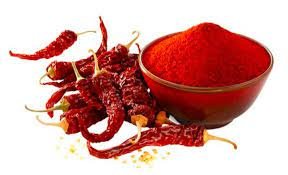Artificial plants are a popular choice for adding greenery and beauty to homes, offices, and other indoor spaces. They offer the benefits of low maintenance and long-lasting beauty, but like any other item in your home, they can accumulate dust and dirt over time. Cleaning artificial plants is essential to keep them looking fresh and vibrant. However, unlike real plants, they require different care and cleaning methods. In this article, we will provide you with a comprehensive guide on how to clean artificial plants effectively, ensuring they remain in pristine condition for years to come.
Why Clean Artificial Plants?
Artificial plants, despite not requiring watering or sunlight like real plants, can still accumulate dirt, dust, and debris. Dust particles can settle on the leaves and stem, making them look dull and lifeless. Over time, dirt and grime can accumulate, making the artificial plants look unattractive and reducing their aesthetic appeal. Additionally, artificial plants placed in areas with high humidity or smoke, such as kitchens or living rooms with fireplaces, can develop a layer of grime faster.
Cleaning artificial plants is important for several reasons:
- Aesthetic appeal: Regular cleaning of artificial plants helps to restore their natural appearance, making them look fresh and vibrant.
- Indoor air quality: Dust and dirt on artificial plants can negatively impact indoor air quality, especially for individuals with allergies or respiratory conditions.
- Longevity: Proper cleaning can help extend the lifespan of artificial plants, preventing damage from accumulated dirt and debris.
- Maintenance: Cleaning artificial plants is part of their low-maintenance routine, ensuring they continue to look good with minimal effort.
Now that we understand the importance of cleaning artificial plants, let’s dive into the step-by-step guide on how to clean them effectively.
Step 1: Dusting
Dusting is the first and most crucial step in cleaning artificial plants. It helps to remove loose dirt and debris from the surface, restoring their natural appearance. Here are some methods for dusting artificial plants:
- Feather duster: Use a soft, clean, and dry feather duster to gently brush off the dust from the leaves and stems of the artificial plant. Start from the top and work your way down, using light and sweeping motions.
- Microfiber cloth: Alternatively, you can use a microfiber cloth or a soft, lint-free cloth to wipe the leaves and stems. Dampen the cloth slightly with water or a mixture of water and mild soap, and gently wipe away the dust and dirt.
- Compressed air: Another effective method is to use a can of compressed air to blow away the dust from the hard-to-reach areas, such as between the leaves and stems. Be sure to hold the can upright and use short bursts of air to avoid damaging the artificial plant.
Step 2: Cleaning
After dusting, you may notice that some spots or stains are still present on the Artificial Potted Plants. In this case, you will need to clean them using mild cleaning solutions. Here are some methods for cleaning artificial plants:
- Water and mild soap solution: Mix a few drops of mild dish soap or liquid hand soap with water in a spray bottle. Spray the solution onto a soft cloth or sponge and gently wipe the leaves and stems of the artificial plant. Avoid soaking the leaves, as excessive moisture can damage them. Once cleaned, use a clean, damp cloth to wipe away the soap residue.
- Vinegar solution: Another effective cleaning solution is a mixture of water and white vinegar. Mix equal parts of water and vinegar in a spray bottle and spray it onto a soft cloth or sponge. Gently wipe the leaves and stems, then use a clean, damp cloth to wipe away the vinegar residue.
Step 3: Dust the Leaves and Stems
Using a microfiber cloth or a soft, lint-free cloth, gently wipe the leaves and stems of the artificial plant to remove dust and dirt. Start from the top of the plant and work your way down, wiping each leaf and stem individually. Be gentle to avoid bending or damaging the leaves.
If there are hard-to-reach areas or crevices, you can use a small brush with soft bristles to gently brush away the dust. Avoid using brushes with hard bristles or abrasive materials, as they can scratch or damage the leaves.
Step 4: Vacuum (Optional)
If your Artificial Bird of Paradise plant is large or has hard-to-reach areas, you can use a vacuum cleaner with a brush attachment to remove dust and dirt. Use the brush attachment on low suction to gently vacuum the leaves and stems.



